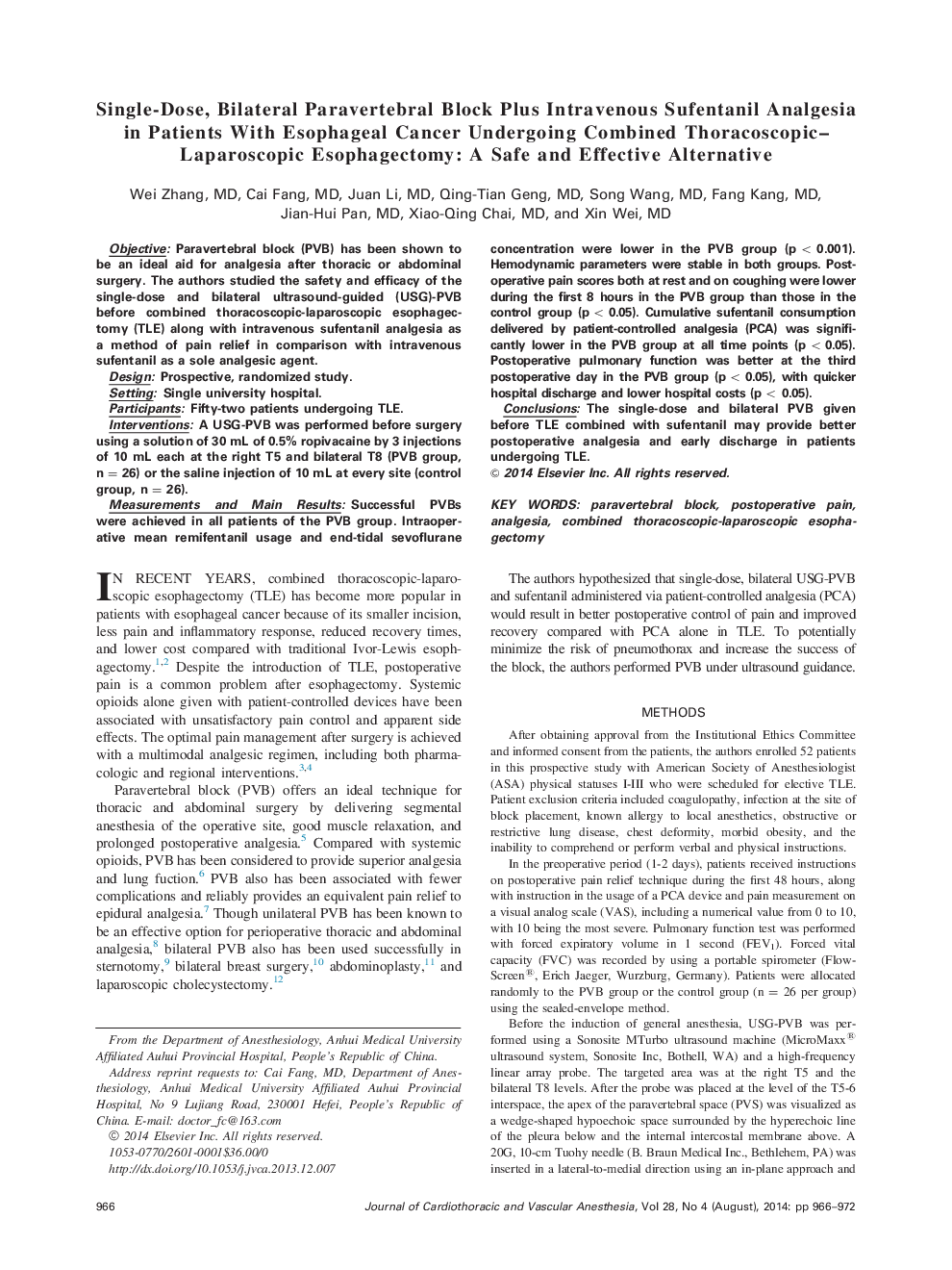| Article ID | Journal | Published Year | Pages | File Type |
|---|---|---|---|---|
| 2759420 | Journal of Cardiothoracic and Vascular Anesthesia | 2014 | 7 Pages |
ObjectiveParavertebral block (PVB) has been shown to be an ideal aid for analgesia after thoracic or abdominal surgery. The authors studied the safety and efficacy of the single-dose and bilateral ultrasound-guided (USG)-PVB before combined thoracoscopic-laparoscopic esophagectomy (TLE) along with intravenous sufentanil analgesia as a method of pain relief in comparison with intravenous sufentanil as a sole analgesic agent.DesignProspective, randomized study.SettingSingle university hospital.ParticipantsFifty-two patients undergoing TLE.InterventionsA USG-PVB was performed before surgery using a solution of 30 mL of 0.5% ropivacaine by 3 injections of 10 mL each at the right T5 and bilateral T8 (PVB group,n = 26) or the saline injection of 10 mL at every site (control group, n = 26).Measurements and Main ResultsSuccessful PVBs were achieved in all patients of the PVB group. Intraoperative mean remifentanil usage and end-tidal sevoflurane concentration were lower in the PVB group (p<0.001). Hemodynamic parameters were stable in both groups. Postoperative pain scores both at rest and on coughing were lower during the first 8 hours in the PVB group than those in the control group (p<0.05). Cumulative sufentanil consumption delivered by patient-controlled analgesia (PCA) was significantly lower in the PVB group at all time points (p<0.05). Postoperative pulmonary function was better at the third postoperative day in the PVB group (p<0.05), with quicker hospital discharge and lower hospital costs (p< 0.05).ConclusionsThe single-dose and bilateral PVB given before TLE combined with sufentanil may provide better postoperative analgesia and early discharge in patients undergoing TLE.
